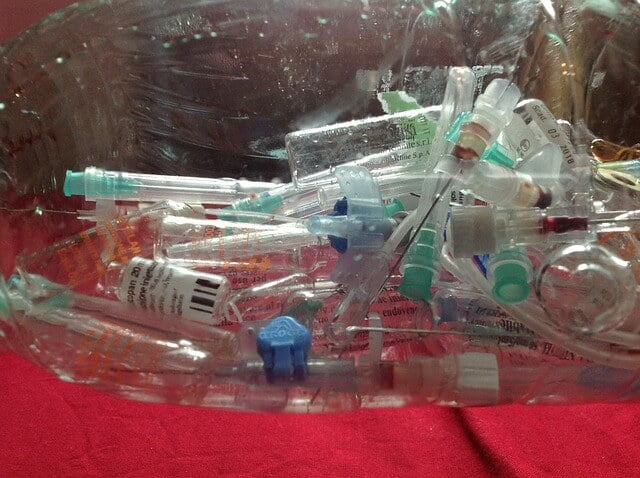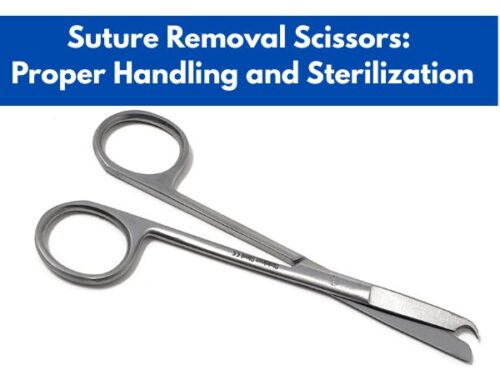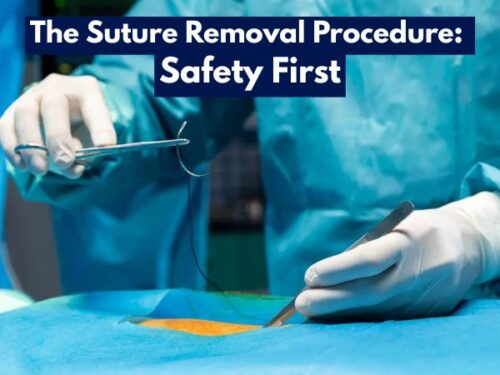Managing Medical Waste Safely and Responsibly: A Look into Waste Management System

Due to the high influx of patients in healthcare facilities, hospitals, along with other diagnostic and treatment centers, produce huge medical waste on a daily basis. Used and discarded products are constantly replaced with newer ones that keep on adding to the overall biomedical waste. Therefore, there is a need to dispose of this medical waste through the employment of a properly planned waste management system. Let us understand the types of medical waste and the methods of its handling and disposition.

Medical waste
What is a waste management system?
The waste management system is a streamlined, detailed method of handling, packaging, storing, and disposing of waste items. The method also includes reducing, reusing, and preventing unnecessary waste production. A waste management system is established based on the type of waste as well as the facility which produces it.
Types of medical waste
Waste items collected from a hospital or any other type of medical facility can be further categorized into subcategories based on the level of risk they pose to public health. Two major classes of medical waste include:
Risk waste:
Risk waste includes items that are highly toxic to human health and need proper disposal to eliminate any chances of contamination. The following table enlists the types of risk waste along with its percentage in overall medical waste.
| Types of risk waste | Percentage (%) | Examples |
| Infectious/pathological waste | 15 to 25 | Culture, bandages, swabs, etc. |
| Sharp waste | 1 | Syringes, needles, blades, etc. |
| Pathological/Body part waste | 1 | Human tissues, organs, fluids, etc. |
| Pharmaceutical/chemical waste | 3 | Expired or used drugs, vaccines, etc. |
| Radioactive/cytotoxic waste | <1 | Radioactive diagnostic or therapeutic materials |
Non-risk waste:
Non-risk or general waste includes items that do not pose any serious harm. Therefore, their disposal is much easier. Non-risk waste includes food waste, aerosols, paper and cardboard, packaging material, etc.
Waste management system
Owing to its severe impact on health, it becomes essential to dispose of the medical waste properly following the standard pre-set guidelines. For this purpose, the need is to establish a waste management system that can be taken as a base for the disposal process. To make a waste management plan, the given steps must be followed:
1. Initial assessment and inventory making
In order to dispose of medical waste, the first step is to sort all the items by doing an initial assessment. This activity is to be conducted by a water and habitat engineer along with the hospital administrator. Moreover, national authorities could be contacted if needed. The waste management team should make an inventory of the items and classify them into their respective categories.
2. Finalizing a waste management plan
Once the inventory is complete, a waste management plan is finalized which includes the following stages:
- Collection and sorting of medical waste
- Checking if any items can be recycled
- Methods of packaging the waste
- Methods of storing waste on a temporary basis
- Protective measures needed to be taken during the process
- Training of staff members
- Estimation of cost
- Audit and follow-up
The plan not only tells what to do but also elaborates on how to do it. Once the waste management plan has been finalized, it is signed by the respective personnel and implemented.
3. Collection and packaging of medical waste
Items included in medical waste are collected, segregated, and packed in proper bags. Special instructions such as ‘hazardous’ or ‘infectious material’ are to be added to the packages to avoid mishandling. The following table enlists the color coding, tags, and containers assigned to each type of item:
| Types of waste | Color-coding/tags | Types of container |
| Sharps | Yellow | Sharps container |
| Infectious waste | Yellow and ‘highly infectious’ | Plastic bag/container which can be put in an autoclave |
| Waste with a high risk of contamination | Yellow | Plastic bag/container |
| Chemical/pharmaceutical waste | Brown | Plastic bag/container |
| Anatomical waste | Yellow | Plastic bag/container |
4. Storage of medical waste
Storing medical waste after packaging is a temporary activity that is done only until the packed waste is further processed. There are pre-specified criteria for how much biomedical waste can be stored at the facility. Once the intended storage period has been completed, the waste is transported to the disposal site. During this process, trained staff should handle the waste with care following the safety procedures.
5. Transportation of medical waste
While transporting medical waste, the manual loading method should not be adopted. Rather, machines should be used to do the job. Make sure that the waste containers are lidded before picking them up so that accidental spillage can be avoided. Trolleys or covered wheelbarrows are employed to do the transportation.
6. Treatment and disposal
The purpose of waste treatment is to make it safe to handle by eliminating pathogenic entities from it as well as to reduce the overall volume of the waste. For this purpose, methods such as autoclaving, microwave disinfection, gasification, and pyrolysis are utilized. Moreover, bleach solution can also be used to disinfect the waste. Apart from these, incineration is a good method to get rid of medical waste but comes with issues like air pollution. Landfills can also be used to contain hospital waste.
Conclusion
Healthcare facilities are known to generate tons of medical waste rich with biological samples, tissues, blood, and microbes which need to be disposed of with care. As handling medical waste is a process that requires precision and accuracy, a proper waste management plan is devised to do so.
By following these steps, the risk of contamination associated with medical waste handling is minimized. After all, the safety of waste management staff, along with the general public, is as important as that of physicians and patients.


















